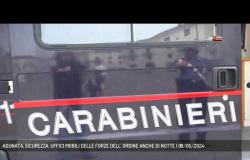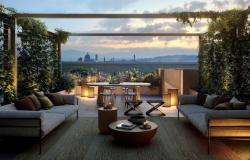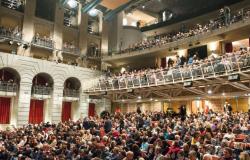In the plethora of exhibitions that explode in Venice around the Biennale, the one dedicated to Willem de Kooning and Italy at the Gallerie dell’Accademia, curated by Gary Garrels and Mario Codognato, catalog edited by the same, has a precise and important profile. Marsilio editions. The exhibition, which ends on 15 September, the first dedicated to the artist in Italy for seventy years, focuses on the presence in the Bel Paese of the great Dutch artist, a naturalized American, reconstructing his travels in 1959 (first a short stay in Venice and Rome, then a longer one, almost a year) and then in 1969, when he was invited to the Spoleto Festival, which dedicated an exhibition of his drawings to him, offering him the opportunity to see a memorable season of shows, including the famous Orlando furioso staged by Luca Ronconi.
The Renaissance was on the other hand a long-standing passion of the painter, who often proposed his theoretical reflections in public, in that era in which most creators displayed contempt for traditions. In 1948, as the publication recounts, he held a conference on Cezanne and Veronese at Black Mountain College, a fundamental space of the Stars and Stripes avant-garde. In 1950 he also gave a lecture for his colleagues in New York entitled Renaissance and Order. De Kooning reiterated, in repeated visits to museums and in discussions with his lifelong friend Arshile Gorky, his relationship with “the Venetians and their brushstrokes, those brushstrokes, which no one could make better”, as he reconstructs in the publication essay by Anna Coliva. Therefore the trip to Italy, as well as being a dream, also had the value of a verification of styles and representations.
In Rome, which the artist felt was much “bigger than New York”, the links passed through figures from the aesthetic world of that era: Marca-Relli, Toti Scialoja and Gabriella Drudi and Afro who lent him his studio. Also in Rome was Ruth Kligman, Jackson Pollock’s former partner, with whom he had a long, tormented relationship.
The selection of works on display in Venice dedicates an important part to sculpture, which De Kooning approached during his second stay in Rome, in 1969, after meeting Herzl Emanuel, an old friend, who had a fusion laboratory in via dei Rari in Trastevere. From the experiment with clay, the transformation into metal was born, which many years later was at the origin of large monuments.
The works created in Italy starting from the 1959 series Black and White in Rome are sequences of dramatic signs, to which the explosion of Mediterranean color is quickly added. The leap in forms proposed by Villa Borghese or A Tree in Naples, both from 1960, is memorable, then moving on to a series of female figures in red and pink, with a strong erotic tension. A selection entitled Elective Affinities also appears in the spaces of the Academy, until 23 June, with works by Picasso, Matisse, Klee and Giacometti, compared with the masterpieces of the collection.





